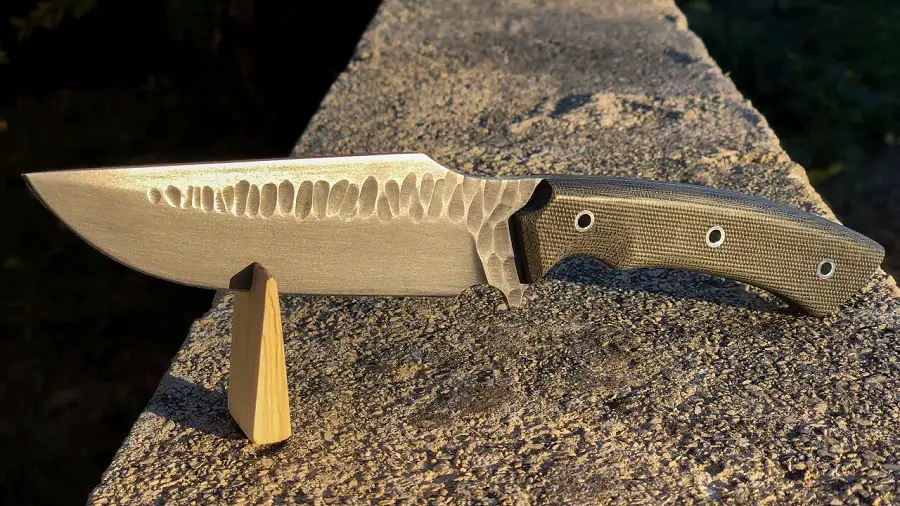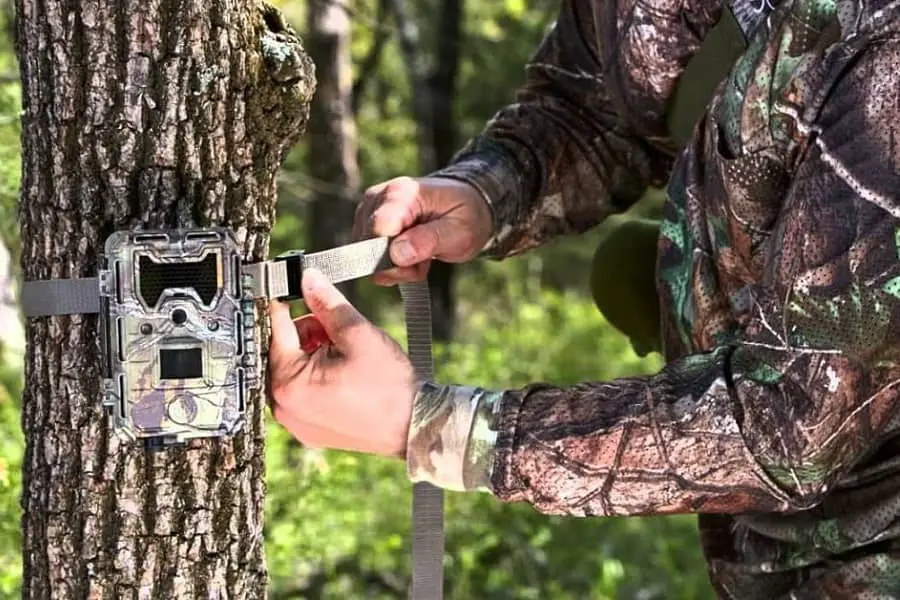A hunter is not complete without a good hunting knife.
Every hunter knows that sinking feeling when they take their knife out, and it is blunt or breaks when they need it in a hurry.
Suppose you want to know how to solve this problem – why not make your knife? That way, you’ll know you’re using a quality knife in the field.
What is a good hunting knife? What is the best material for making a hunting knife?
All these questions are paramount for creating a hunting knife.
This article discusses how to make a hunting knife by answering relevant questions. Every hunter wants to know how to make a hunting knife because they’re curious, and it’s a reasonably straightforward process.
A little history
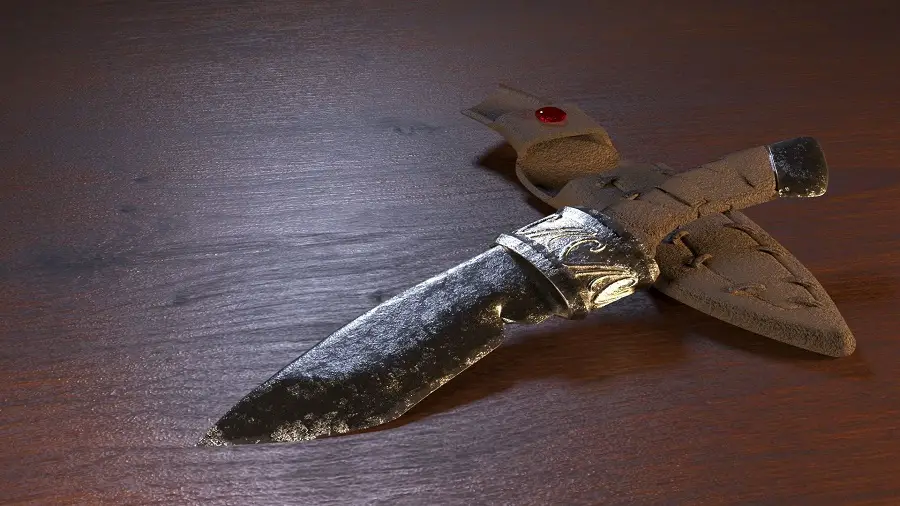
Understanding a little history of hunting knives helps reveal how to make the best hunting knife.
After stones and clubs, the hunting knife was the next generation of tools or weapons, allowing early hunters to slaughter animals for meat and hides. The rudimentary knife was also critical for protection from predators and other tribes in the past.
The use of iron to manufacture knives grew with the arrival of the Iron Age, which lasted from 1000 to 800 B.C. Iron proved to be much sharper than bronze because its cutting ability was much keener than bronze.
However, iron had a significant problem since it bent easily. This problem forced the Vikings to be more innovative and mix iron with carbon, better known as carbonizing.
Combining these two elements improved both the sharpness and rigidity of their knives. The tradition of mixing elements to enhance the quality of an item remains today.
Contemporary hunting knives feature a stiff, single-edged blade and a broad secure grip. For added strength, the blade’s unsharpened section, the tang, extends into the grip.
Hunting and dressing games now consist of various styles, including folding, lock-back knives, and special skinning and gutting knives.
How to make a hunting knife involves which metal to use. Steel or stainless steel is an excellent choice for the knife blade, an essential element of a contemporary hunting knife.
The carbon content of the metal mixtures also influences the blade’s toughness. Sharpness, hardness, finish, and corrosion resistance are all improvements made by adding compounds, such as molybdenum.
How do hunting knives differ?
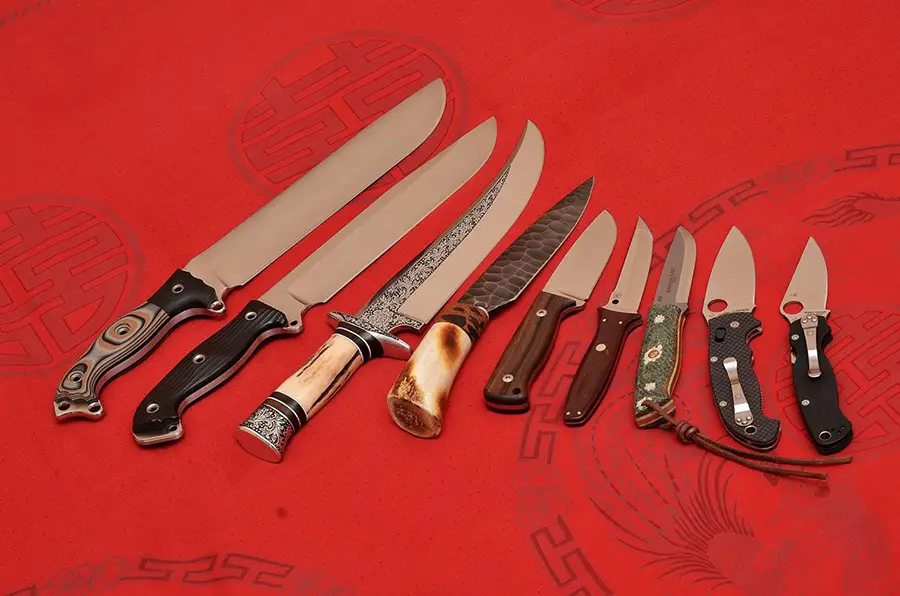
Hunting knives are different from regular kitchen knives. Hunting knives are designed for survival in the outdoors and as a valuable tool for use in non-domestic circumstances.
Outdoors’ people and military personnel are the most common users of hunting knives to suit their vocations. The blade lengths of these knives typically vary between 4 and 8 inches. Depending on their design and purpose, hunting knives can also be hefty or light.
However, the primary use of a kitchen knife is to prepare food, which distinguishes it from a hunting knife.
Because various knife blade designs are intended for different uses in the kitchen, these knives come in a wide range of designs. Serrated, straight, or reestablished knife edges are all options for appropriately kitting out a kitchen.
Regardless of technological differences, kitchen knives are more similar than they are distinct from hunting and other utility-type knives. The primary distinction is that hunting knives can be modified and used as tools rather than utensils.
Thus usability, versatility, and durability are more critical to hunting knife makers. With a hunting knife, you can accomplish more than you can with a kitchen knife.
For short periods, specific kitchen blades may suffice as hunting knives, but they won’t easily survive the stresses of the outdoors over time. Kitchen knives are also more delicate and prone to blunting, which is why chefs sharpen them so frequently.
Another distinction between hunting knives and kitchen knives is that hunting knives frequently have a folding mechanism for convenient and secure carrying when not in use.
In other words, kitchen knives almost always have fixed blades, which is not always the case with hunting knives.
Reasons to make a hunting knife
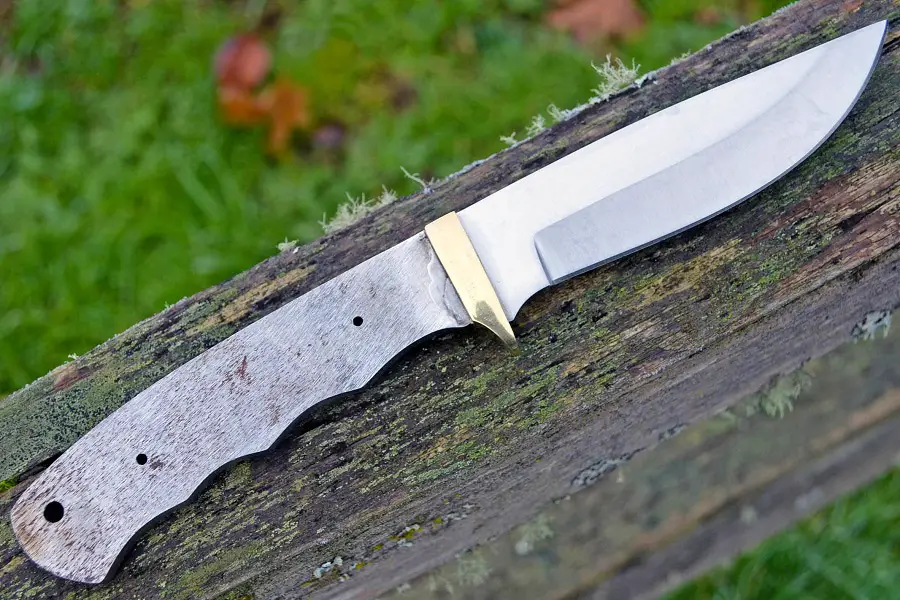
How to make a hunting knife is crucial for anyone with an interest in hunting.
If you want a customized hunting knife, then the goal is to make one for yourself. You may be a big game hunter and can’t find the right blade for the type of hunting sprees you take, so the best thing is to learn how to make a hunting knife yourself.
Ensure that you think about the material that you will use to make your hunting knife. One of the most appropriate materials for this purpose is carbon steel.
Carbon steel knives are incredibly robust and long-lasting, but they’re also quite prone to rust, which is why you should consider making a carbon steel knife with a stainless coating if possible.
Carbon steel is a little more expensive than regular steel, but it is worth the extra expense.
A hunting knife should be razor-sharp to cut through anything in the woods, including game hides, meat, and bones if necessary.
If you make a knife out of high-carbon steel, which is sharper than stainless steel, you will have the right tool for any situation in the wild.
When you want to know how to make a hunting knife, follow guidelines with sufficient details. Making your hunting knife gives you the freedom to determine the thickness of the metal.
The knife’s strength is directly proportional to its blade thickness, which is vital to consider. A larger blade can bear more lateral strain than narrower and thinner knives and increases the knife’s longevity.
A further thing to think about when making your knife is its tip. Ensure that the tip is wide enough to prevent bending or breaking. Also, consider the correct angle for sharpening your DIY hunting knife once you get stuck into this project.
How to make a hunting knife by yourself?
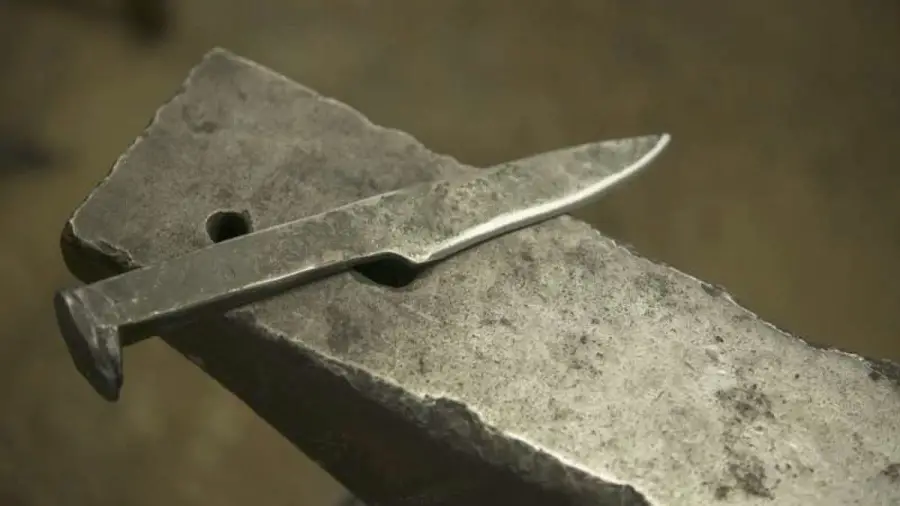
Handmade hunting knives can compete with some of the most incredible hunting knives money can buy.
You will get a dependable weapon that fits your hand. You also experience a great sense of satisfaction in creating something practical and beautiful.
Materials needed
You’ll need a few simple tools and resources to create a hunting knife. If you don’t already have them, pick them up at any hardware store.
These materials include safety goggles, a dust mask, epoxy, antler, drill, rawhide, hacksaw, sandpaper, and a hunting knife blade blank with a partial tang.
Step-by-step guide
Here are the details for how to make a hunting knife.
- Design your hunting knife with a pen and a piece of paper. A critical step in this process is the knife design. Remember, you’ll be working on this for a long time, so preparing ahead is essential! Changing the design on paper is a lot easier than changing the steel! The better your planning, the better the result will be.
- Purchase the resources you will need to match your knife design. After careful consideration of the style of hunting knife you want, decide on the blade material, size, and handle material.
- Cut and shape your hunting knife design according to the pencil-drawn pattern. Remove the side profile of the design from the sketch and cut out the shape. Draw the perimeter of the pattern on the steel. You can either scribe the pattern or profile into the steel with a sharp instrument or use a thin permanent pen.
- Add the beveling. This beveling is the section that becomes the cutting-edge for the profile. Hold the blade horizontally on the workbench or table and gently polish the edge to create the chamfer profile using the file. Many people use belt sanders and other tools for this detail, but a file works just as well, although it takes longer. Try to keep the file and the steel at the same angle as you file along the blade’s edge. Continue filing at this steep angle until the edge becomes sharp.
- Drilling and finishing the blade for the first time entails gently sanding off all the file markings and creating a nice finish with sandpaper. This finishing is a crucial step that you should go through, so take your time and complete the work correctly. Begin sanding in the same direction using a rough grade of sandpaper. Swap to a finer grade of sandpaper once you’ve eliminated all the scratches and grooves. Once the blade is completely sanded, you move to the next step.
- Heat treating the blade is one of the project’s more technical sections and is challenging. This process entails heating the steel to the point where it gets demagnetized before drenching the blade in oil. In oiling the metal after heating to strengthen the blade, it becomes fragile during this process. Dropping the blade at this point means it will almost certainly break.
- After drenching the blade in oil, the color will turn black after tempering. You must use coarse sandpaper and follow up with a finer grit to remove all the black residue. Increase the grits gradually until you reach approximately 1200.
- Take your handle and clamp it on either side of the hunting knife. Drill the holes to allow you to secure the handle with screws. You can also use glue to strengthen the handles further.
You have not only just read about how to make a hunting knife – but have accomplished your task if you follow through with your DIY project.
Conclusion
A handcrafted hunting knife is something to be proud of and a valuable weapon that will last for decades if well-constructed. Learning how to make a hunting knife is every hunter’s dream and should be on your bucket list.
Add knife-making to your skill set to increase your self-sufficiency, so head to the hardware store and grab yourself the tools you need to make your hunting knife.
References:


